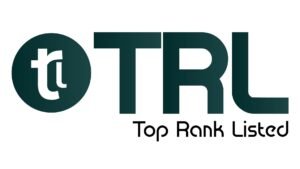Predictive Analytics in Recruitment -Contemporary applicant tracking systems (ATS) rely on predictive analytics and will use current and previous data combined with advanced algorithms to identify potential future hiring events.
This involves forecasting viable candidates, future talent pool requirements, and predicting long-term retention of employees. Using algorithms as an underlying scaffold, the ATS searches for repeating patterns between resumes, performance variables, programs, and previous workforce recruiting cycles, allowing recruiters to make factual and data-driven recruiting decisions.
This evidence-based decision-making process enables the time-saving of recruiting while decreasing the chance of unconscious bias. Ultimately, predictive analytics supports workforce planning, resource allocation, efficiency in the recruiting process, and improves the experience in the overall candidate journey.
The Hiring Challenge Every Leader Knows
- Long time-to-hire (sometimes 45–60 days).
- High first-year attrition.
- Candidates who look great on paper but fail to perform.
Let’s clarify what makes this shift possible. What exactly is predictive analytics in recruitment?
-
- Which candidates are most likely to succeed?
- Who will stay beyond the first 12 months?
- Which applicants align with team culture and company values?
-
- Performance data from past hires.
- Skills assessments.
- Employee retention metrics.
- Even behavioural insights like communication style and problem-solving patterns.
Old vs. New: Predictive Analytics in Recruitment

Traditional Recruitment:
-
- Resumes are manually screened or keyword-matched.
- Heavy reliance on recruiter intuition.
- Short-term focus on filling a vacancy.
- High subjectivity and risk of bias.
Predictive Analytics Recruitment (2025):
-
- Candidates scored and ranked with data-driven models.
- Forecasts retention and performance potential.
- Culture fit is assessed using measurable attributes.
- Objective evaluation reduces bias and increases fairness.
How Predictive Models Work (Without the Jargon)
1. Data Collection
-
- Resumes, assessments, and interview notes.
- Performance ratings and turnover data from existing employees.
- HRIS (Human Resource Information System) records.
2. Data Cleaning & Preparation
-
- Standardizing formats (job titles, education, skills).
- Removing irrelevant or biased variables.
3. Model Development
-
- Statistical methods like regression analysis.
- Machine learning algorithms that recognize patterns.
- Natural Language Processing (NLP) for resume and communication analysis.
4. Candidate Scoring
-
- Each applicant receives a “fit score.”
- Scores cover performance prediction, retention probability, and cultural alignment.
5. Recruiter Action
-
- Shortlists are prioritized automatically.
- Recruiters spend less time sifting, more time engaging top candidates.
Benefits of Predictive Analytics in Recruitment
- Faster Time-to-Hire: Research by Deloitte shows that predictive ATS tools can cut hiring time by 30% to 40%. With less manual screening, interviews happen sooner and offers go out faster.
- Higher Retention and Quality of Hire: Companies using predictive models report a 20 to 35 per cent improvement in first-year retention, which helps reduce costly turnover.
- Cost Savings – Bad hiring comes with high recruitment costs per employee. SHRM estimates that predictive hiring can reduce hiring costs by as much as 23%.
- Diversity & Inclusion Gains – When properly audited, these models lessen the chances of putting undue weight on some bias factors like informal local networks or resume formats-for fair evaluation of candidates.
Challenges & Risks Leaders Must Manage
- Data Bias: If your historical data were indeed biased, then your model would tend to repeat those patterns.
- Privacy & Compliance: GDPR and EEOC regulations must be taken into consideration for candidate data handling.
- Over-Reliance on Algorithms: Human factors should be taken into consideration when applying judgment; numbers alone will not consider them.
- Interpretability: Some models, in essence, cannot be interpreted. HR leaders should insist on systems they can understand.
Case Study 1: Global Tech Firm Cuts Time-to-Hire by 38%
-
- Average time-to-hire: 52 days.
- First-year attrition: 28%.
-
- Average time-to-hire dropped to 32 days.
- First-year attrition fell to 17%.
- Recruiter satisfaction increased as shortlists were stronger.
Case Study 2: Retail Chain Boosts Diversity Hiring by 24%
-
- 24% increase in hires from underrepresented groups.
- 19% higher productivity among new hires.
- Stronger employer brand perception with candidates reporting a “fairer process.”
Future Outlook: Recruitment Beyond 2025
- NLP for Soft Skills – Systems will increasingly use natural language processing to analyze communication styles and problem-solving capabilities, providing more nuanced predictions of a candidate’s ability to collaborate and work within teams in real-world contexts.
- Beyond Hiring: Career Forecasting – Models that predict not just who will stay but who will thrive, get promoted, and lead teams.
- Ethical Hiring Frameworks – Transparency and explainability are becoming non-negotiable. Companies will need to show candidates why they were scored a certain way.
- Integration with Productivity Data – Linking post-hire performance back into the ATS for closing the feedback loop continuously and continually improving.
Actionable Takeaways for HR Leaders
- Run a Pilot Project with one business unit or role type.
- Audit Your Data to ensure it’s clean and unbiased.
- Select the Right Vendor that offers explainability and compliance.
- Train Recruiters to interpret scores as decision support, not decision replacement.
- Measure Outcomes continuously (retention, time-to-hire, quality of hire).




